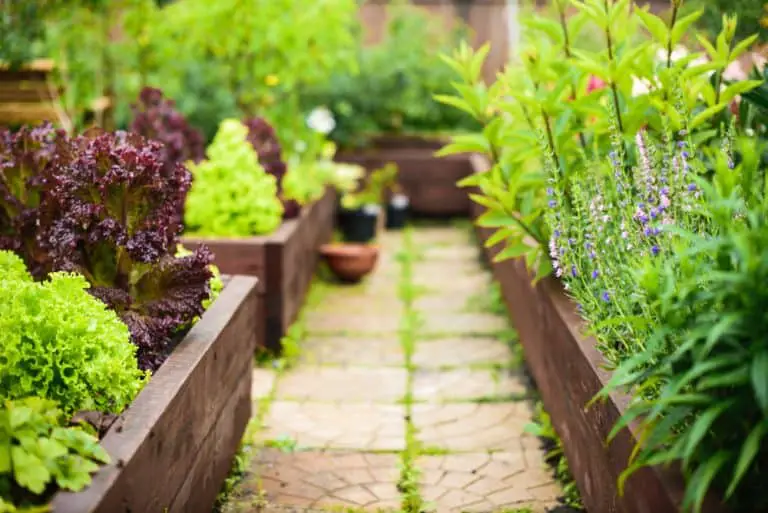Beefmaster Tomato Plants: 8 Simple Steps To Grow Them 2022
Remember the tasty red juicy giant beefsteak tomatoes you used to enjoy?
Well, between beefmaster tomato vs beefsteak, beefmaster tomato plants taste and look just like them!
The best part is that the plant bears more fruit during harvesting time, which makes it an ideal plant to grow!
Wondering how to cultivate that red, beefy tomatoes this summer?
If you’ve successfully grown any tomatoes in your backyard, growing beefmaster tomato plants wouldn’t be an issue.
If you haven’t planted one before, don’t worry, we’ve got you covered.
Let’s dive deeper into what you need to know about growing these beefmaster tomatoes in your garden.
Summary of Beefmaster Tomato Plants
In this article, we will be exploring:
- 8 Simple Steps To Grow Beefmaster Tomatoes In Your Garden
- Understanding Beefmaster Tomato Plants
- Planting Tips For Beefmaster Tomatoes
- Harvesting Beefmaster Tomatoes
- Tomato Storage After Harvesting
- Common Beefmaster Tomatoes Diseases
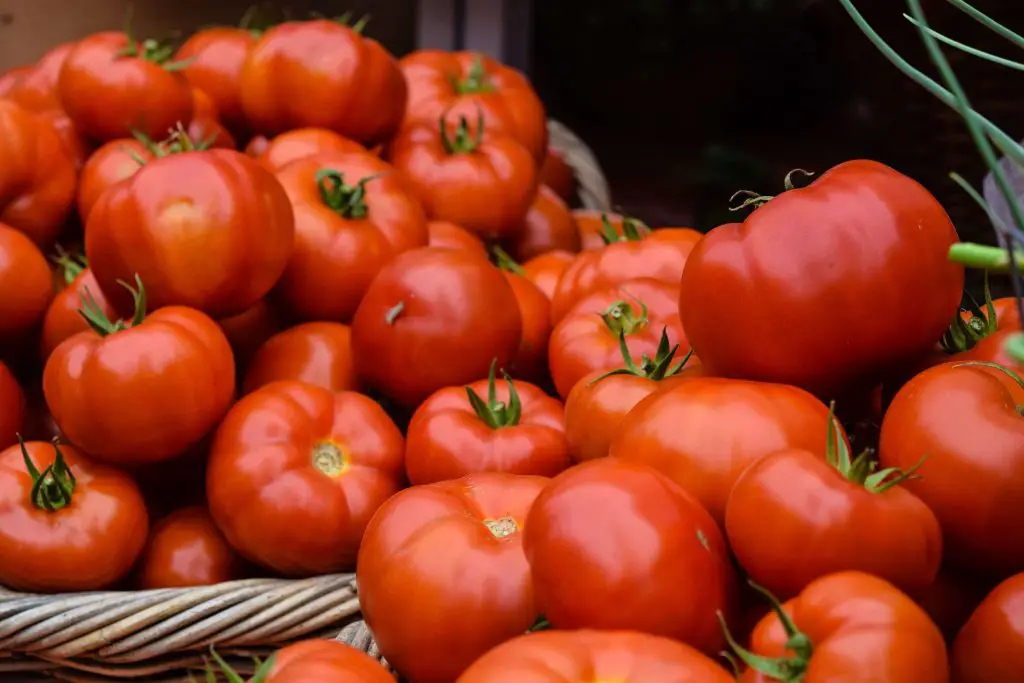
Affiliate Link Disclaimer
Some of the links here are affiliate links, and I may earn if you click on them, AT NO EXTRA cost to you. I hope you find the information here useful! Thanks!
Related Posts
- How To Grow Beefsteak Tomatoes In A Pot + Growing Tips!
- How To Grow Cherry Tomatoes In Pots
- How To Grow Tomatoes On A Fence: 6 Step Guide [2022]
- 7 White Winter Plants For A Cheerful Winter![2023]
8 Simple Steps To Grow Beefmaster Tomatoes In Your Garden
Beefmaster tomatoes generally have a long growing season that takes around 80 days especially more so if you leave in the cooler region.
Be sure to set your plants early and protect them from the cold.
Growing beefmaster tomato is easy if you follow this guide.
1. Prepare your seedlings and start planting your beefmaster tomato seeds five to six weeks before the last frost in your compound. A tip to keep them warm is to place a frost blanket to help them retain the heat and stay warm.
2. Choose a garden spot that has access to sunlight.
In general, tomatoes love a full sun as it will help them develop a productive yield. It’ll be best to survey at different times of the day before you start.
Ideally, look for an area that will allow your crop to absorb between six to eight hours of daily sunlight. Spacing does matter too, so be sure to find a spot big enough to space the plants around two feet apart.
3. Enrich your soil with the correct ratio of compost to increase water drainage and ensure a sufficient supply of nutrients to the plant. Depending on your living vicinity, if your garden’s soil is dark coloured and rich looking, that means it’s full of nutrients.
But if it is looking sandy and pale in color, you’ll likely need to give it a little boost before you start planting. Beefmasters are heavy feeders, so ensuring they’ll have healthy soil is a must.
4. Gather your supplies in advance as Beefmasters tend to climb up high. Beefmaster tomato height can be about eight to ten feet tall. Look out for stakes that are around that height and be sure to buy a lot of tie-ins so you can support them well to the stakes.
Tie-ins made from velcro are ideal as they are easy to reposition, gentle enough to the stems, and reusable throughout the seasons.
5. Harden off your seedlings by simply introducing your plants to the outdoors for a short amount of time. Choose a shady spot that is exposed to the sun for about two hours and bring them back inside once the time is up.
Hardening is an introductory process for the plants so they won’t get shocked by the outdoor environment when the time comes for them to be placed outside.
Progressively leave your plant outside for a longer period until it’s time to plant the Beefmasters in your garden.
6. Plant your Beefmaster tomatoes by placing the seedlings deeper in the soil to allow more room for the stems to grow more roots. As mentioned previously, the plants should be spaced two feet apart so they won’t choke on each other.
Once each seedling has been planted, use a garden trowel or your hands to firmly press the loose soil around the perimeter of the base plant.
7. Prune your plants from time to time whenever you happen to be in the garden. Beefmasters like almost every tomato variety require special pruning to ensure they get all the nutrients they need.
Look out for the small sucker shoots or leaves that grow right where the branch of a tomato plant meets the stem.
When they are left untouched, they can turn into a bushy, secondary tomato plant which in turn will prevent the parent plant from producing any baby Beefmasters.
8. Water your plants. Check the soil’s moisture level regularly and water the soil consistently to prevent any development of blossom end rot.
A simple way to check if the soil is watered adequately is to use your finger to check if the soil is dry. Remember to water the plant at its base and not on the stems and leaves. Exposing them to tons of water can lead to rot and various diseases.
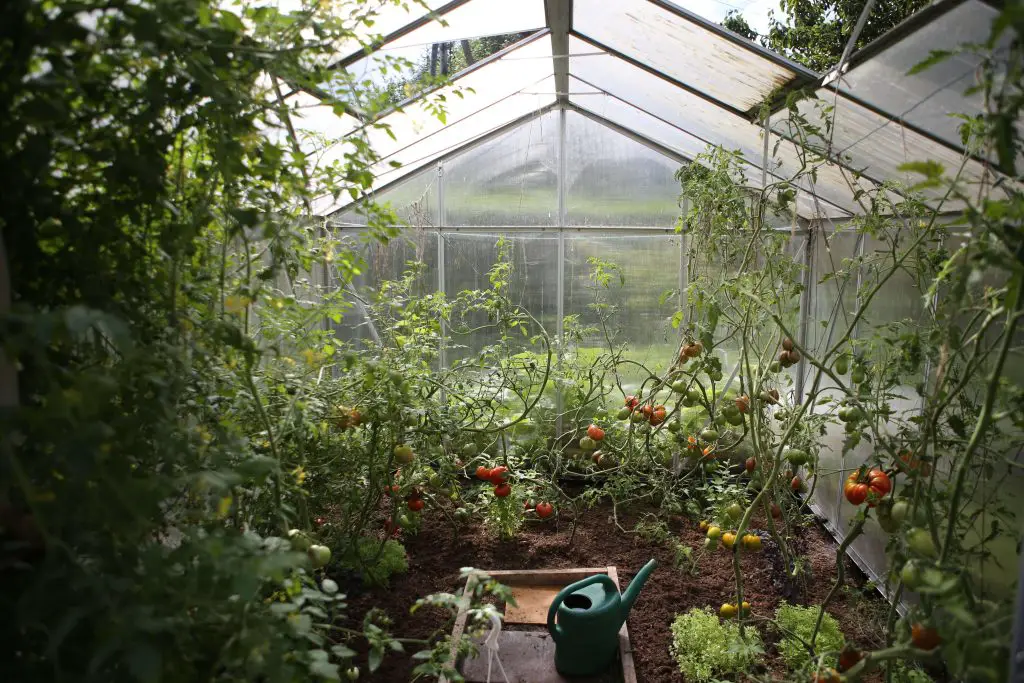
Understanding Beefmaster Tomato Plants
Beefmaster tomato plants are generally large, they may not be the biggest tomato plants to ever exist but it typically weighs around 2 pounds each.
Commonly used as a delicious tomato slicing in sandwiches, it can also be used to make tomato sauce.
The mild, sweet, and fruity flavor surely packs a punch and is a perfect fruit for the summer. They are also high in Vitamins A and C which make a perfect snack to munch on!
Did you know that as the beefmaster hybrid tomato plant underwent some improvements in recent years, it now produces massive, red-colored beefsteak fruits which can tolerate cracking better?
With Beefmaster being one of the first generations of hybrid plants, cross breeding between two distinct ‘pure’ tomatoes, produce larger yields in the long run.
Planting Tips for Beefmaster Tomatoes
Now that you know how to successfully plant a beefmaster tomato plant, let’s take a look at some planting tips to take extra care of the yield.
1. Stake your plants well
2. Have a consistent watering schedule
3. Mulch the plants
4. Remember to fertilize
Harvesting Beefmaster Tomatoes
Beefmaster Tomato plants tend to ripen over a long period of time since they are indeterminate breeds. Be sure to check on your garden regularly and pick the ripe ones to avoid any spoilt bunch.
Always look for a deep-colored tomato as it will only ripe after being picked off from your plant.
The texture should feel firm when you hold and squeeze it.
When the time comes for you to harvest, always remember to grab and twist the tomatoes until it becomes free from the stem. Alternatively, you can simply cut the stems using a clean pair of clippers or pruners. Be sure to cut the stems closer to the fruit.
A word of advice, try not to refrigerate your beefmaster tomatoes right after picking as the difference in temperatures will cause a breakdown of the flavor compounds.
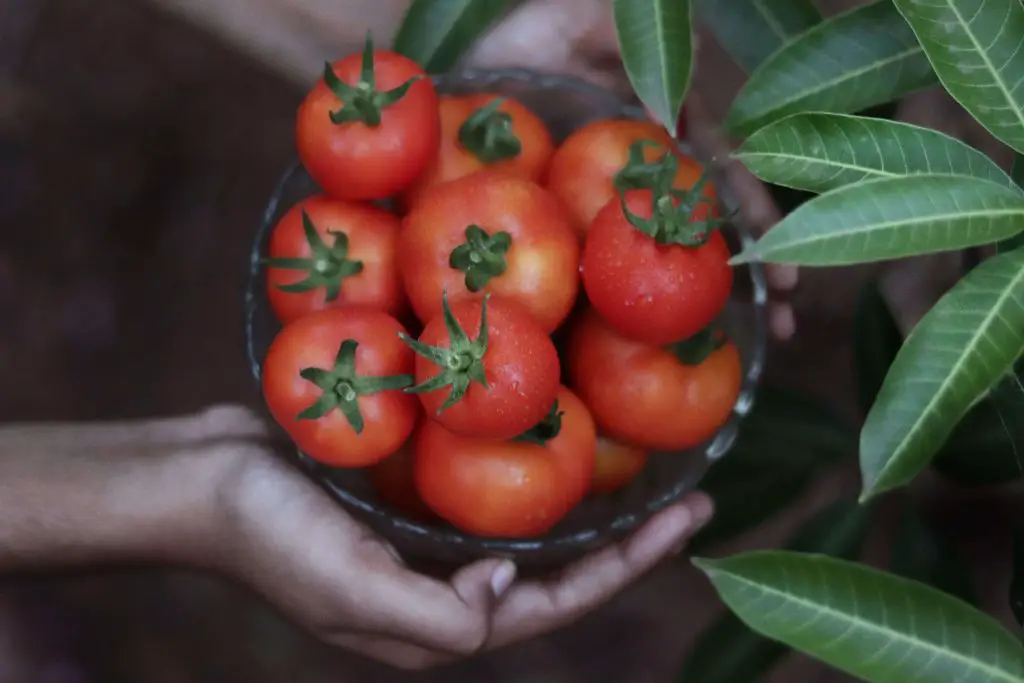
Tomato Storage After Harvesting
Place the freshly reaped tomatoes in a cool, dark location at room temperature. Storing them in shady places should suffice too.
If you plan to dehydrate them, first slice them up to your preferred size and lay them on absorbent paper. They can be kept refrigerated for 6 months in an airtight bag, frozen, or preserved in oil.
Common Beefmaster Tomatoes Diseases
1. Early and Late Blight
While Beefmasters may be resistant to all major diseases, the two you need to remember are Early and Late blight. They may have similar names but each has different traits.
Early blight is a widespread disease that attacks the lower leaves and gradually creeps up the plant. Those small, dark, irregularly shaped lesions that slowly turn into large rings are signs of early blights.
They seldom kill your plant but they will significantly reduce your yield amount.
The best prevention is to ensure sufficient space is provided for air circulation.
On another note, late blight disease is more severe than early blight. It’s easy to spot a late blight as it produces greasy-looking grey spots, nickel in size, and is often wet in texture.
At the same spot underneath the leaves, you’ll find a fuzzy, white fungal growth.
Late blight spreads quickly and can kill your plant within a week, hence why it is deemed to be one of the most disastrous diseases as there is no hope of salvaging it. The only thing left to do is remove the plant and chuck it in the trash or burn it.
2. Flea Beetles
One of the severe pests to your beefmaster tomato plant is the flea beetles. Just by the name of it reminds you of fleas as they are small in size and jump around just like them.
Flea beetles attack your plants all over and if you notice small holes in your foliage, those are eaten by the adult fleas, whereas the larvae attack the roots.
At this point, nothing is safe and once your plants are infected, it’s only a matter of time until your whole garden is infested too.
The only precautions you can take once the plant or garden is infested are as follows.
- 1. Use row covers to cover the young seedlings.
- 2. Hang yellow sticky traps to catch them when they’re jumping around
- 3. Clear any debris under your plants to prevent them from overwinter
- 4. Insert beneficial nematodes into the soil
3. Hornworms
These destructive tomato pests are large caterpillars, especially coming from the insect category. Measured around 3 inches long, you can spot and pick them up as you find them.
The size of these caterpillars is not the main issue, but the color of their body can be problematic as they are a pale green color that blends well with the greeny tomato leaves, which makes it harder for you to see them.
The moment you see any hornworms slithering on your leaves, be sure to remove as many as you can. Treat it with an organic treatment, Bacillus Thuringiensis (BT) to avoid facing the same issues.
4. Cutworms
Cutworms may look similar to grubs but they aren’t. These slimy insects love to eat the stems of young plants and only do this during night time. The next thing you know, you’ll be losing a whole stack of seedlings overnight.
To avoid this pesky mess, create 4 inches long of little collars around the stems of your plants.
They can be made from paper, aluminum foil, or cardboard. Sink them into the ground, leaving 3 inches of leftover paper above the ground level.
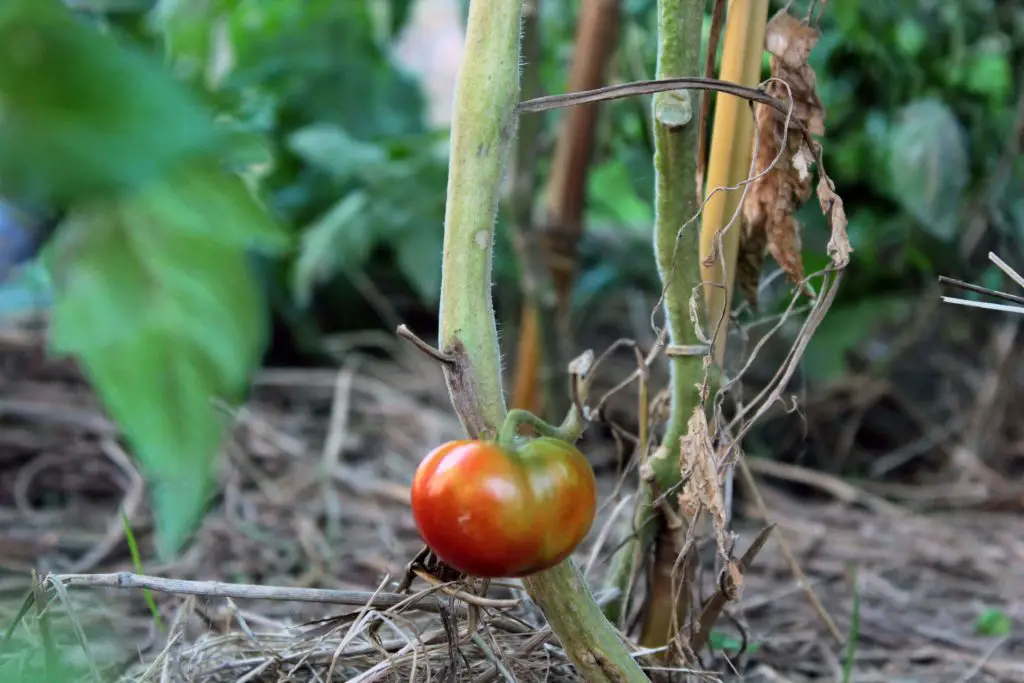
Are Beefmaster Tomato Determinate Or Indeterminate?
Are beefmaster tomato determinate or indeterminate plants? Beefmaster tomato plants are indeterminate tomatoes. In other words, you cannot save the seeds for the next season as they will not mature true to their type.
That also means the chances of it being as successful as the first harvested season will be different.
How Far Apart Should I Plant Beefmaster Tomatoes?
How far apart should I plant beefmaster tomatoes? Plant your beefmaster tomatoes around 20 to 36 inches apart. The dimension given is also dependent on the type of beefmaster tomato variant that you chose. Be sure to remember to plant your tomato plants deeply into the soil.
How Do You Prune Beefmaster Tomato Plants?
Wondering how you prune beefmaster tomato plants? You can prune beefmaster tomato plants by pruning out some of the side suckers. Tomato plants generally don’t need pruning as you can still get fruits, but this video will give you an insight as to how and why we should prune the tomato plants.
How Tall Do Super Beefsteak Tomato Plants Get?
How tall do super beefsteak tomato plants get? Super beefsteak tomato plants can grow up to as high as six feet tall. Beefsteak tomato is considered the largest among the tomato plants, it can produce fruits that expand to six inches in diameter that often weighs more than one pound on average.
Conclusion

Learning how to grow beefmaster tomato plants is as easy as cultivating any other tomato variety.
With many gardeners that are out to break the record for growing big fruits and vegetables, why not join in the challenge! They may not be as tasty, but they sure do grow big.
These large beefmaster tomatoes are versatile enough to be used for canning, and fresh eating, and perfect for sandwich inserts.
Without any doubt, tomatoes are a healthy summer snack and will surely be a favorite amongst everyone each year.
We would love to hear from you, so be sure to share your experiences and tips with us if you’re planning on growing them soon!
Related Posts





![15 Companion Plants For Asparagus To Help It THRIVE! [2023]](https://aboveandbeyondgardening.com/wp-content/uploads/2022/11/companion-plants-for-asparagus-768x510.jpg)
![How To Harvest Cilantro Without Killing The Plant?[The Best Way!]](https://aboveandbeyondgardening.com/wp-content/uploads/2022/10/how-to-harvest-cilantro-without-killing-the-plant-6-768x512.jpg)
![23 Companion Plants For Thyme To Help It THRIVE! [2023]](https://aboveandbeyondgardening.com/wp-content/uploads/2022/10/companion-plants-for-thyme-16-768x512.jpg)

![8 Pumpkin Growing Stages [+ Growth Tips!]](https://aboveandbeyondgardening.com/wp-content/uploads/2022/10/Pumpkin-Growing-Stages-9-768x512.jpg)
